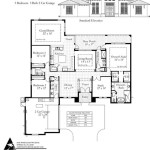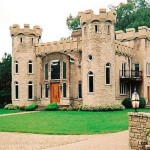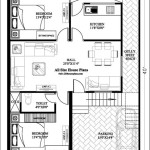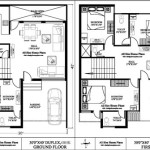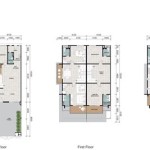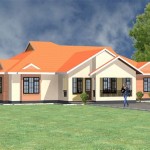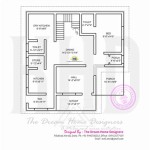Exploring Folk Victorian Cottage House Plans
Folk Victorian cottage house plans represent a delightful blend of simplicity and ornamentation, offering a unique glimpse into late 19th-century American architecture. These homes, typically built between 1870 and 1910, are characterized by their modest size, asymmetrical forms, and decorative details drawn from the Victorian era. While not as elaborate as high-style Victorian mansions, Folk Victorian cottages possess a charming character that makes them appealing to homebuyers and history enthusiasts alike.
Understanding Folk Victorian architecture necessitates recognizing its origins. The term "Folk Victorian" acknowledges the influence of Victorian styles filtered through the lens of vernacular building traditions. This means that local builders, often without formal architectural training, adapted popular Victorian motifs using readily available materials and construction techniques. The resulting houses are characterized by their accessibility and affordability, making them a prevalent housing type across rural and suburban landscapes during the period.
These cottages were often built for working-class families and those of modest means. They offered a step up from earlier, simpler housing styles and provided a sense of pride and respectability to their occupants. The architectural details, while decorative, were often mass-produced, allowing for widespread adoption and contributing to the style's popularity.
Analyzing Folk Victorian cottage house plans involves examining several key elements, including the floor plan, exterior ornamentation, and common building materials. These houses often feature a straightforward layout, typically with a central hallway leading to various rooms. The exterior, though relatively simple in overall form, is often adorned with decorative elements such as gingerbread trim, spindlework, and brackets.
Key Characteristics of Folk Victorian Cottage Floor Plans
Folk Victorian cottage floor plans are typically characterized by their compact and functional layouts. The focus was on maximizing space and providing comfortable living areas within a relatively small footprint. While variations exist, some common features are consistently observed.
Firstly, a central hallway is a defining characteristic of many Folk Victorian cottages. This hallway often runs the length of the house, providing access to the primary rooms on either side. This layout allows for efficient circulation and separates public spaces from private areas. In some cases, the hallway might be offset to one side, creating a slightly asymmetrical feel, but the principle of a central access point remains.
Secondly, the floor plan typically includes a parlor or living room at the front of the house. This room served as a formal space for receiving guests and was often the most elaborately decorated room in the house. Adjacent to the parlor, one might find a dining room, which was also used for entertaining and family meals. These front-facing rooms were meant to showcase the family's status and prosperity.
Thirdly, the kitchen was often located at the rear of the house, reflecting its functional role as a workspace. It was typically separated from the more formal areas of the house to contain cooking odors and noise. In some cases, the kitchen might be connected to a small back porch or utility area.
Fourthly, bedrooms were typically located on the upper floor, if the cottage had a second story. These bedrooms were often simple and sparsely furnished, reflecting their primary purpose as sleeping quarters. In single-story cottages, bedrooms would be located towards the back of the house, offering privacy from the street.
Lastly, bathrooms were not always a standard feature in early Folk Victorian cottages. As indoor plumbing became more common, bathrooms were often added to existing structures, typically located near the kitchen or in a converted closet space. This explains why bathroom layouts in these homes can sometimes seem unconventional.
Exterior Ornamentation and Decorative Elements
The exterior of a Folk Victorian cottage is where the style's charm truly shines. While the overall form of the house might be relatively simple, the decorative details add visual interest and character. These details, often mass-produced and readily available, allowed homeowners to personalize their homes and express their individual style.
One of the most recognizable features of Folk Victorian cottages is the use of gingerbread trim. This intricate wooden trim, often featuring scrollwork, brackets, and spindlework, was typically applied to porches, eaves, and gables. The term "gingerbread" refers to the trim's delicate and ornate appearance, resembling the icing on a gingerbread house. This trim added a touch of whimsy and elegance to the otherwise simple facades.
Another common decorative element is spindlework. Spindles are slender, turned wood pieces that were often used to create decorative screens or railings on porches. These spindles were often painted in contrasting colors to highlight their intricate patterns. Spindlework added visual depth and texture to the exterior, creating a sense of visual richness.
Porches were an integral part of Folk Victorian cottages. These porches provided a sheltered outdoor space for relaxation and socializing. They were often adorned with decorative columns, railings, and brackets. The porch served as a transition zone between the interior and exterior, blurring the lines between the public and private spheres.
Windows were also given special attention. Folk Victorian cottages often featured decorative window surrounds, including pediments, brackets, and patterned glass. These details added visual interest to the windows and enhanced the overall aesthetic appeal of the house.
Finally, the color schemes of Folk Victorian cottages were often quite vibrant. While white was a common base color, accents of contrasting colors were used to highlight the decorative details. Common color combinations included shades of cream, brown, green, and red. These colorful palettes added to the overall charm and character of the homes.
Materials and Construction Techniques
Folk Victorian cottages were typically constructed using readily available and affordable materials. The construction techniques employed were often straightforward, reflecting the knowledge and skills of local builders.
Wood was the primary building material for Folk Victorian cottages. Wood framing, typically using balloon framing or platform framing techniques, provided the structural support for the house. Wood siding, such as clapboard or shiplap, was used to clad the exterior walls. The choice of siding often depended on the regional availability of different wood species.
Brick foundations were common in many areas. Brick was a durable and readily available material that provided a solid base for the house. In some cases, stone foundations were also used, particularly in areas where stone was more abundant.
Roofs were typically covered with wood shingles or slate. These materials provided weather protection and contributed to the overall aesthetic appeal of the house. The pitch of the roof varied depending on the regional climate and the desired architectural style.
The construction techniques used were often relatively simple and straightforward. Local builders relied on their experience and knowledge to construct these homes without the need for elaborate architectural plans. The focus was on creating functional and durable structures using readily available materials.
Interior finishes were typically simple and unadorned. Plaster walls were common, often painted in light colors. Wood floors were also common, often covered with rugs or carpets. The overall aesthetic was one of simplicity and practicality.
The use of mass-produced decorative elements, such as gingerbread trim and spindlework, allowed builders to add visual interest to the homes without significantly increasing the cost of construction. These details were often purchased from local lumberyards or catalogs, making them readily available to builders and homeowners.
In conclusion, Folk Victorian cottage house plans represent a unique and charming architectural style that reflects the values and aspirations of late 19th-century America. Their simple floor plans, decorative exteriors, and use of readily available materials make them an accessible and appealing housing type. Studying these homes provides valuable insights into the history of American architecture and the evolution of housing styles.

1905 Late Folk Victorian House Plans Hodgson Rae Model

1918 Simple Two Story Folk Victorian Front Gable C L Bowes Chicago Plan Book Homes House Plans

1905 Hodgson House Plans Early 20th Century Homes Old Houses For Small Floor Vintage

William E Poole Designs Folk Victorian Cottage Inc

The Radford American Houses 100 Ilrated Old For Victorian House Plans Blueprints Queen Anne

Small 1905 Hodgson House Plan Oregon Queen Anne Cottage Plans With Pictures Floor

American Victorian Interior House Plans Small Floor

Pin By Vgclapper On Architecture I Like Victorian House Plans American Houses Architectural Floor

House Plan 73837 Victorian Style With 4200 Sq Ft 2 Bed Bath

William E Poole Designs Folk Victorian Cottage Inc

